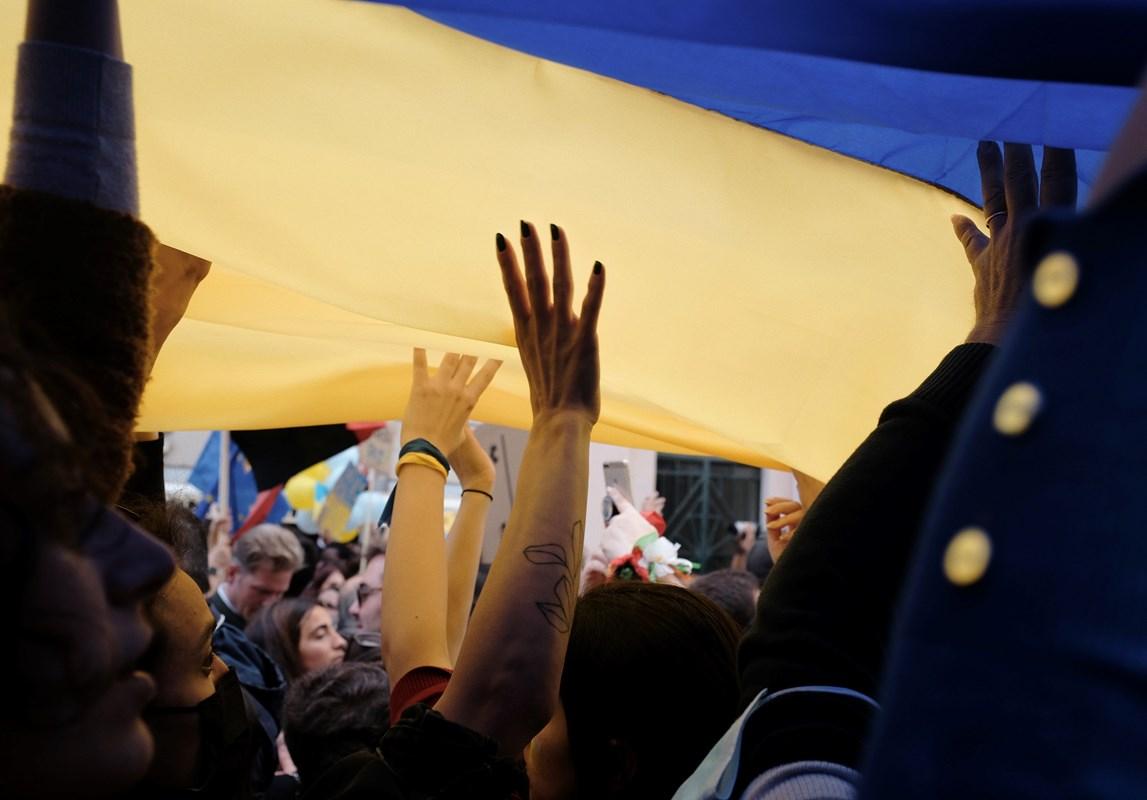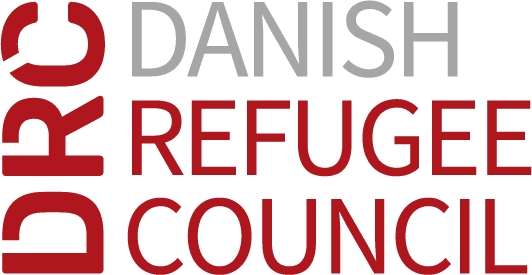

It will never be the same! How the Ukrainian diaspora fills a real gap in humanitarian response
23 September 2022
Long before the conflict in Ukraine escalated, the Ukrainian diaspora already filled a gap in humanitarian response. Since February 24, the Ukrainian community around the world quickly expanded its relief efforts to meet the growing needs of the conflict affected population. All this, while the formal humanitarian infrastructure was established, grant funding was secured, and humanitarian agencies secured their own supply lines and staffing.
Raising awareness for diasporas' emergency response
Throughout the period of the annexation of Crimea and areas of eastern Ukraine between 2014 to 2022, Ukrainian diaspora organizations transitioned their humanitarian activities from a spontaneous approach based on supporting those most in need to developing longer-term relationships with communities, local organizations, and hospitals requiring support.
The Russian Federation military offensive on Ukraine on 24 February 2022 has once again thrust diaspora organizations into the position of being both frontline responders and important donors to local organizations. Their close attention to the escalation of hostilities and their previously developed relationships in Ukraine have put them in a unique position as interlocutors between host countries and their focal points in Ukraine.
New evidence on Ukrainian diaspora interventions available!
To better understand the situation, DEMAC commissioned a real-time review to assess the activities, reach, and impact of Ukrainian diaspora organizations for six weeks following the offensive on Ukraine. The study includes a mapping of 63 Ukrainian diaspora organizations, social media monitoring and 18 key-informant interviews with UN agencies, INGOs and diaspora networks.
The report finds that many organizations were well-placed to respond to the situation in Ukraine due to experience gained during the 2014 to 2022 period. This includes the ability to leverage pre-existing contacts and partners on the ground – particularly in the health response – as well as prior experience coordinating delivery of aid to remote areas of the country.
Diaspora networks had equal or better access to Ukraine as compared to traditional humanitarian actors in the early response period. Many organizations were well-placed to continue advocacy messaging and began organizing protests and launching fundraisers prior to 24 February 2022 in response to anticipated hostilities.
In the past eight years, the average revenue in donations for our organization would be 70,000 USD per year. Now, in one month we raised +10 million USD.
Who is the Ukrainian diaspora? And how do they respond to this conflict?
The Ukrainian Ministry of Foreign Affairs (MFA) estimates that the Ukrainian diaspora is nearly 7 million people - or 16% of the total population of Ukraine. Nearly half of the Ukrainian diaspora live in Russia, with the remaining portion primarily spread throughout North America, Europe (particularly Poland, Germany, and Italy) and Australia.
Volunteering during an ongoing conflict?
Ukrainian diaspora organizations have existed for several decades and, prior to 2014, were focused on providing cultural support and promotion of Ukrainian culture abroad. Further, most of both registered and unregistered organizations were completely volunteer-run, and were operating with no paid staff (75% of the survey participants). However, to cope with the sudden surge in funds and emergency needs, networks also increased their number of volunteers. One respondent based in Poland reported that their number of volunteers has increased from ten to one thousand individuals.
We are all volunteers, but this will probably change soon because the volume of work is too much. This is a lot of money and a lot of responsibilities that our group are carrying out now - also the number of people that we are helping has increased exponentially.
Delivering humanitarian aid under the radar!
Ukrainian diaspora organization have been implementing their activities directly in Ukraine or through a partner. 75% of the participating organizations were active in fundraising, followed by 50% in advocacy and awareness raising. Ukrainian diaspora networks mostly provide humanitarian assistance in the health sector, such as distributing medical supplies both in the form of consumables and heavy equipment. This is followed by distribution of non-food items and information sharing with 75% of organizations reporting conducting such activities. Next is food distribution and shelter with 63% of organizations, and transport support for relocation with 13%.
These activities have been taken place within the first six weeks of the invasion of Ukraine and went largely unnoticed or recognized by international humanitarian actors.
Non-traditional - but effective!
The diaspora-led humanitarian response may not be 'in line' with traditional humanitarian response - but was critical to filling a massive gap in needs in the initial weeks of the crisis while the humanitarian infrastructure was being established, grant funding was secured, and humanitarian agencies secured their own supply lines and staffing.
Given the rapidity of the crisis and the level of displacement, local and agile response that is not restricted by traditional accountability principles focused on saving lives was appropriate. For many diaspora networks, support to military and civilian defense forces was essential to their response and seen as an area that the public (including their donors) supported. This has been a difficult space to navigate, as it is in the clearest contravention of humanitarian principles but is also aligned with the diaspora organization's mandate.
We usually directly contact the head of the clinic for receiving supplies. It’s usually a very direct way of communication, saying: ‘Okay, we have four pallets of hospital supplies, do you need them?’ They say yes or no. The truck comes in, picks it up, and delivers it. It’s all done relatively fast. Once the goods reach our warehouse, the turnout is probably like two days.
Ukraine's diaspora and its humanitarian response
Better together? Partnerships & Coordination
Ukrainian umbrella organizations dating back to the 1920s have been able to bring together many diaspora organizations across the world. The Ukrainian Congress Committee of America (UCCA) for instance, includes a national council consisting of 70 representatives from each organization under their umbrella as well as representatives from their several branches across the United States.
However, most interviewed organizations do not see formal coordination between diaspora organizations themselves, as well as with other entities such as other NGOs and UN agencies, as a priority when compared to delivering services in the current emergency. As indicated by these organizations, at this moment, it is critical that every organization does everything in their capacity to focus on lifesaving aid.
As such, the coordination and collaboration largely take place around individual projects. For instance, on 28 March 2022, at least eight diaspora organizations and community-based groups came together to ship 3.5 tons of medical supplies and equipment to Ukraine. Several informal networks using WhatsApp have been established (e.g., Ukrainian World Congress) to share information or reach out to like-minded organizations - though engagement is not consistent. Similarly, Ukraine911 was established to match organizations providing medical assistance in the US to organizations in Ukraine (or organizations linked to organizations in Ukraine) that have specific medical needs.
Bevar Ukraine
The Ukrainian diaspora network in Denmark expanded to 8 offices with 400 volunteers since the conflict started. They have Memorandums of Understandings with Ukrainian Ministries of Health and Social Affairs for delivery of humanitarian aid in Ukraine. Bevar Ukraine sent 50 trucks of aid within the first 3 weeks. In addition, they are involved in reception, legal aid and psycho-social support for refugees in Denmark.
Why does collaborating with diasporas make sense?
INGOs and institutional humanitarian actors can learn a lot from the localized nature of diasporas. Diasporas are multi-sectoral, fast responding actors who work transnationally, including in countries facing humanitarian crises. They have a connection to and understanding of their country of heritage. Therefore diasporas are often among the first-responders in the aftermath of a disaster.
They are also key actors when it comes to raising the alarm in times of crisis. Because of their continuous connection, diaspora organizations are alerted in real-time by their community back home. Within short time, they can collect and disperse funds rapidly. This is important to deliver fast and first response. In hard-to-reach places where access may be an issue, diaspora organizations have a unique advantage due to their local connections and ties.













